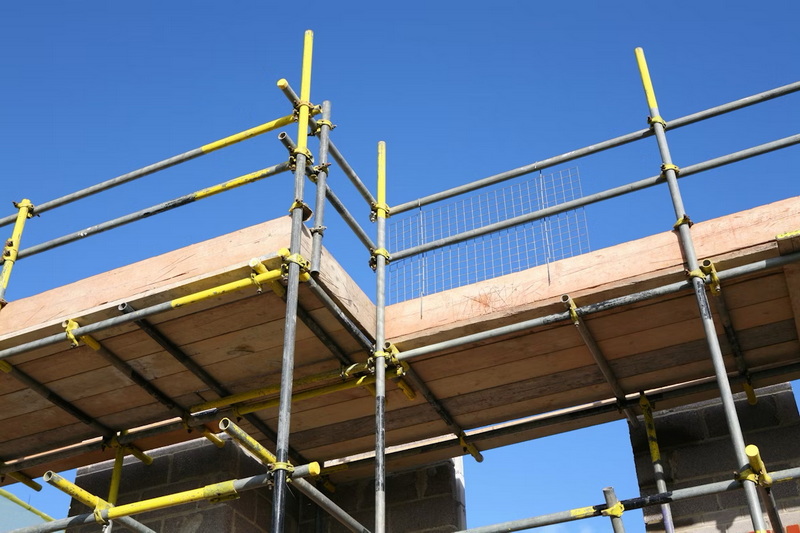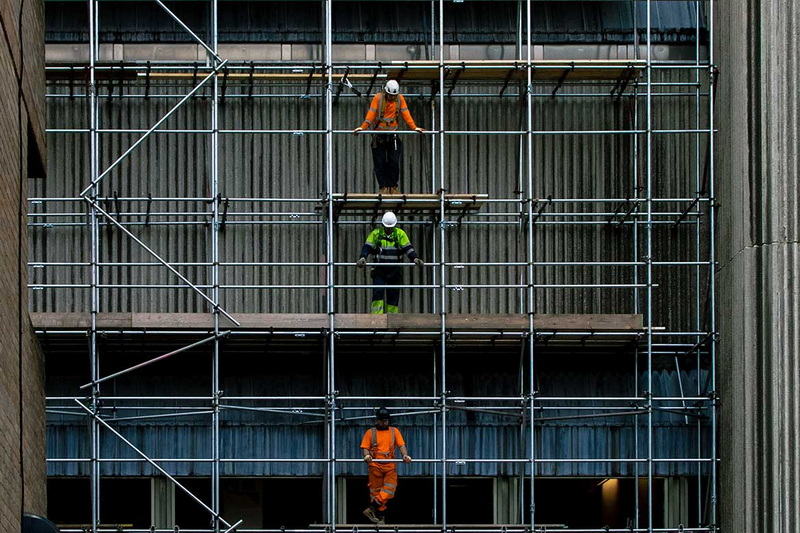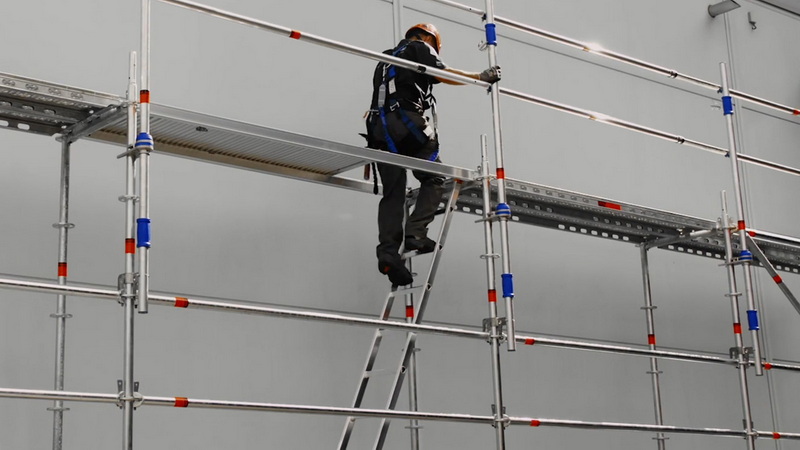Content Menu
● What is a Scaffold Guardrail System?
● Key Components of a Scaffold Guardrail System
● Importance of Installing a Scaffold Guardrail System
>> 1. Fall Prevention
>> 2. Compliance with Safety Regulations
>> 3. Increased Worker Confidence
>> 4. Enhanced Visibility
>> 5. Protection Against Weather Elements
● Step-by-Step Guide to Installing a Scaffold Guardrail System
>> Step 1: Gather Necessary Tools and Materials
>> Step 2: Prepare the Scaffold Frame
>> Step 3: Install Vertical Posts
>> Step 4: Attach Horizontal Rails
>> Step 5: Install Toe Boards
>> Step 6: Add Access Gates
>> Step 7: Final Inspection
● Best Practices for Maintaining Scaffold Guardrail Systems
>> Regular Inspections
>> Training Workers
>> Adherence to Regulations
>> Document Maintenance Activities
● Common Mistakes When Installing Scaffold Guardrail Systems
>> Inadequate Fastening
>> Incorrect Height Placement
>> Neglecting Toe Boards
>> Overloading Guardrails
● Conclusion
● FAQ
>> 1. What is the purpose of a scaffold guardrail system?
>> 2. At what height is a guardrail required?
>> 3. How do I know if my guardrail system is installed correctly?
>> 4. What materials are commonly used for scaffold guardrails?
>> 5. Can I use my scaffold without guardrails?
● Citations:
In the construction industry, safety is paramount, especially when working at heights. One of the most effective ways to ensure worker safety on scaffolding is by installing a scaffold guardrail system. This system acts as a protective barrier, significantly reducing the risk of falls and providing peace of mind for workers. This article will delve into the importance of guardrails, outline the step-by-step process for installation, and discuss best practices for maintaining a safe work environment.

What is a Scaffold Guardrail System?
A scaffold guardrail system is designed to provide edge protection on scaffolding platforms, preventing accidental falls from heights. Typically made from durable materials such as steel or aluminum, these systems consist of vertical posts, horizontal rails, and sometimes toe boards. The primary function of guardrails is to create a physical barrier that keeps workers safe while they perform tasks at elevated levels.
Key Components of a Scaffold Guardrail System
- Vertical Posts: These are anchored to the scaffold frame and provide structural support for the guardrails.
- Horizontal Rails: Installed at specified heights (usually top rail at 40-45 inches), these rails form the main barrier.
- Toe Boards: These are placed at the base of the guardrail to prevent tools and materials from falling off the platform.
- Access Gates: These gates allow workers to enter and exit safely without compromising safety.
Importance of Installing a Scaffold Guardrail System
1. Fall Prevention
The primary purpose of a scaffold guardrail system is to prevent falls. According to OSHA regulations, guardrails are mandatory on scaffolding platforms that are 10 feet or higher. The presence of guardrails significantly reduces the likelihood of accidents, ensuring that workers can focus on their tasks without fear of falling.
2. Compliance with Safety Regulations
Installing a scaffold guardrail system ensures compliance with safety regulations set forth by organizations such as OSHA (Occupational Safety and Health Administration) and ANSI (American National Standards Institute). Adhering to these standards not only protects workers but also helps avoid potential fines and legal issues for employers.
3. Increased Worker Confidence
When workers feel safe, they are more productive. A well-installed scaffold guardrail system provides reassurance that safety measures are in place, allowing workers to concentrate on their tasks without distraction.
4. Enhanced Visibility
Guardrails are often painted in bright colors, making them highly visible on construction sites. This visibility serves as a constant reminder for workers to remain cautious near edges and elevated areas.
5. Protection Against Weather Elements
In addition to fall prevention, scaffold guardrails can protect workers from adverse weather conditions such as wind or rain. By providing a barrier against these elements, guardrails contribute to a safer working environment.
Step-by-Step Guide to Installing a Scaffold Guardrail System
Step 1: Gather Necessary Tools and Materials
Before beginning installation, ensure you have all necessary tools and materials:
Tools:
- Hammer
- Wrench
- Screwdriver
- Level
- Measuring tape
- Safety goggles
- Gloves
Materials:
- Vertical posts
- Horizontal rails
- Toe boards
- Access gates
- Fasteners (nuts, bolts)
Step 2: Prepare the Scaffold Frame
Before installing the guardrail system, ensure that your scaffold frame is stable and properly assembled:
1. Check Stability: Ensure that the scaffold is level and stable.
2. Inspect Components: Verify that all components are in good condition without any signs of damage or wear.
Step 3: Install Vertical Posts
1. Position Posts: Insert vertical posts into designated coupling pins on the scaffold frame.
2. Secure Posts: Use hammer and pigtail locks to secure each post firmly in place.
Step 4: Attach Horizontal Rails
1. Determine Height: The top rail should be positioned between 40-45 inches above the platform.
2. Install Rails: Attach horizontal rails to vertical posts using gravity locks or fasteners.
3. Ensure Stability: Double-check that all rails are securely fastened and stable.
Step 5: Install Toe Boards
1. Position Toe Boards: Place toe boards along the base of the guardrail system.
2. Secure Toe Boards: Use screws or nails to secure toe boards in place, ensuring no gaps exist between the board and platform.
Step 6: Add Access Gates
1. Position Gates: Install access gates at entry points where workers will enter or exit.
2. Secure Gates: Ensure gates swing inward towards the platform for added safety.
Step 7: Final Inspection
Once all components are installed:
1. Check Alignment: Use a level to ensure all posts and rails are straight.
2. Test Stability: Apply pressure to each component to confirm stability.
3. Conduct Safety Review: Review installation with team members to ensure understanding of safety protocols.

Best Practices for Maintaining Scaffold Guardrail Systems
Regular Inspections
Conduct regular inspections of the scaffold guardrail system to identify any signs of wear or damage:
- Check for loose fittings or rusted components.
- Ensure that all fasteners are secure.
- Replace any damaged parts immediately.
Training Workers
Provide training sessions for all workers regarding proper use and maintenance of guardrail systems:
- Educate about the importance of guardrails in fall prevention.
- Train workers on how to identify potential hazards related to scaffolding.
Adherence to Regulations
Stay updated on local regulations regarding scaffolding safety:
- Ensure compliance with OSHA and ANSI standards.
- Implement changes as necessary based on regulatory updates.
Document Maintenance Activities
Keep records of inspections, maintenance activities, and training sessions:
- Document any repairs made or parts replaced.
- Maintain records for compliance purposes during audits.
Common Mistakes When Installing Scaffold Guardrail Systems
Even experienced crews can make mistakes when installing scaffold guardrail systems. Here are some common pitfalls to avoid:
Inadequate Fastening
Failing to securely fasten horizontal rails can lead to instability in the guardrail system. Always double-check connections before allowing workers onto the scaffold.
Incorrect Height Placement
Placing horizontal rails at incorrect heights can compromise safety standards. Always adhere to OSHA guidelines regarding rail placement (40-45 inches).
Neglecting Toe Boards
Skipping toe board installation can result in tools or materials falling off scaffolds, posing risks below. Always install toe boards as part of your guardrail system.
Overloading Guardrails
Using guardrails as support for heavy materials is unsafe and can lead to structural failure. Ensure that guardrails are only used as protective barriers.
Conclusion
Installing a scaffold guardrail system is an essential step in ensuring worker safety on construction sites. By following proper installation procedures and adhering to safety regulations, employers can create a secure working environment that minimizes fall risks. Regular inspections, worker training, and compliance with regulations further enhance safety measures associated with scaffolding operations. Ultimately, investing in a robust scaffold guardrail system not only protects workers but also contributes positively to overall project efficiency and success.

FAQ
1. What is the purpose of a scaffold guardrail system?
The primary purpose of a scaffold guardrail system is to prevent falls by providing a physical barrier around elevated work areas on scaffolding platforms.
2. At what height is a guardrail required?
According to OSHA regulations, a guardrail is required on scaffolding platforms that are 10 feet or higher from the ground.
3. How do I know if my guardrail system is installed correctly?
Ensure that vertical posts are securely fastened into coupling pins, horizontal rails are level between 40-45 inches above the platform, and toe boards are installed without gaps at the base.
4. What materials are commonly used for scaffold guardrails?
Scaffold guardrails are typically made from durable materials such as steel or aluminum due to their strength and ability to withstand impact.
5. Can I use my scaffold without guardrails?
Using scaffolding without guardrails is not compliant with OSHA regulations if working at heights over 10 feet; it poses significant risks for falls and injuries.
Citations:
[1] https://www.youtube.com/watch?v=kpZ3-iCs8xA
[2] https://scaffoldtype.com/edge-protection-and-guard-rail-systems/
[3] https://www.metaltech.co/setup-instructions/
[4] https://scaffolding.ca/straprail-edge-protection-explained/
[5] https://images.thdstatic.com/catalog/pdfImages/d7/d7b61be3-f04b-4b21-8442-2cb48fabbe48.pdf
[6] https://aaitscaffold.com/blog/role-of-guardrails-and-safety-nets-in-fall-prevention/
[7] https://www.youtube.com/watch?v=ThI3pEJcU_4
[8] https://www.metaltech.co/category/safety-guardrail-systems/
[9] https://brandsafway.com/uploads/files/orn107__bsl_adjustable_guardrail_gate_instructions.pdf






















